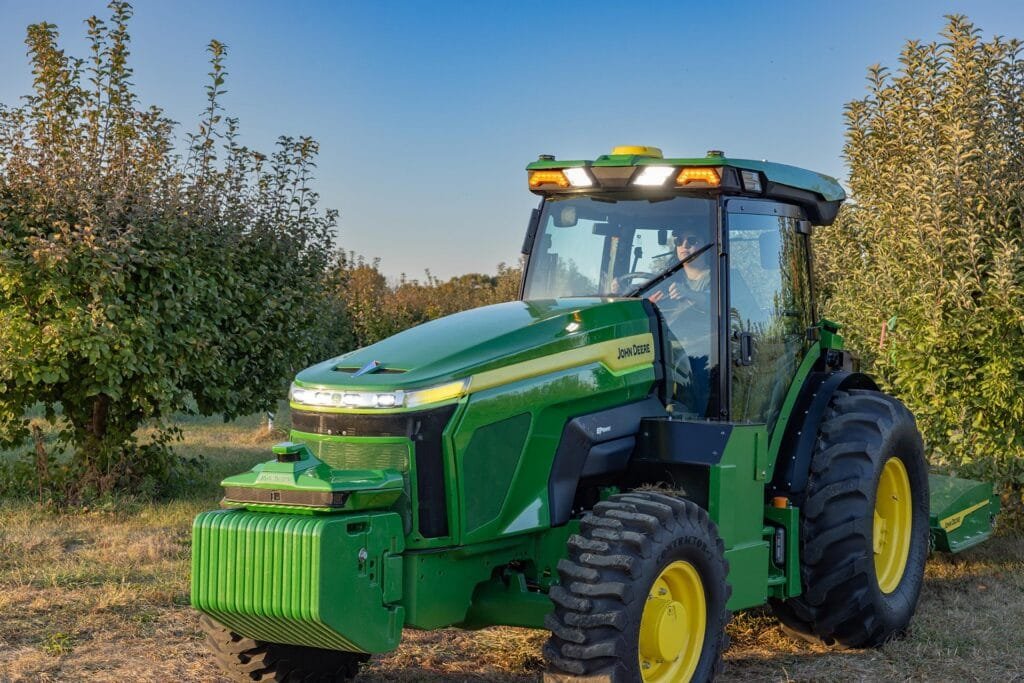An agricultural landscape is shifting beneath our feet quicker than the average prairie dog dives for cover. This year, retrofit kits transforming legacy farm machinery into full-fledged autonomous equipment have entered the limelight, flashing both promise and peculiarity. Once upon a time, tractor operators rose before sunrise—today, algorithms threaten to retire those early mornings entirely.
The AGCO OutRun Autonomous Tractor Retrofit Kit stands out as a prime specimen of this trend. Designed initially for select Fendt and John Deere tractors, this system enables machines to autonomously handle grain cart towing and tillage operations—tasks that have chewed through labor hours traditionally. Grain augering now proceeds while human hands fiddle with something else or possibly nothing at all.
It’s not only AGCO jumping on these rails; Sabanto and Carbon Robotics present compelling alternatives too. Their autonomy kits grant aging mechanical giants new tricks: GPS-guided precision turns, obstacle detection working overtime like a caffeinated sentry at dawn, remote operation from essentially anywhere with an adequate signal. Exhaustive compatibility lists signal that retrofitting isn’t just for green-painted hulks either—mixed fleets gain admittance into this futuristic congregation without much ceremony.
John Deere made their intentions clear during CES 2025 by unveiling Next Generation Perception Autonomy Kits—a mouthful perhaps but apt in scope. Rather than limiting themselves to tractors alone, these kits suit tillage implements or sprayers (even wandering orchard workers). The technical chassis includes redesigned camera clusters alongside rugged NVIDIA processing boards—coated as if ready for the anti-hospitality of subarctic mornings. Their machine learning vision arrays build panoramic models from sixteen stereo cameras; fields no longer hide secrets among rows thanks to Blue River Technology’s algorithms running atop Jetson GPUs.
There was once a belief that automation would cause a swift decline in manual labor employment across sectors—it’s still debated whether agriculture tells quite so simple a story. For many operations haunted by seasonal worker shortages or excruciating recruitment cycles under midsummer heat domes, autonomy may serve more as lifeboat than adversary.
With such advancements come subtle topics: vehicle telemetry meshes gracefully with radio frequencies not merely shuffling bits back-and-forth but sustaining robust dialogue between environmental sensors and navigation brains embedded somewhere close to steel axles. There remains little doubt about robustness after witnessing circuit boards enduring jackrabbit leaps in temperature down past minus forty Fahrenheit—a design choice reflecting farming realism rather than marketing flourish.
Implementation complexity varies less uniformly though; one Midwest operator likened adapting his older disk tiller to “teaching my uncle string theory,” hinting at required patience levels when marrying silicon logic onto hydraulic antiquities. Meanwhile another neighbor saw installation proceed swiftly—four hours flat—and marveled as his implement traced perfectly accurate headlands where crooked lines had been customary since diesel was two dollars cheaper per gallon.
Sabanto pivots somewhat differently—they market retrofitted autonomy less through horsepower braggadocio and more via persistent uptime plus measurable reductions in operator fatigue across fragmented parcels of land seldom praised by urban planners.
Manufacturers tout safety redundancies almost obsessively: Lidar scanners cross-referencing infrared beacons during fog-tinged harvests (a scenario loosely reminiscent of old tales involving foxfire). In some minor cases though—not often publicized—the very software providing redundancy causes decision hesitation mid-row-change when sensor conflicts arise unexpectedly among thick hedges or reflective metal scraps leftover from long-forgotten projects.
Nowhere is it written however that older models lack relevance provided electronics can clamber over dated control valves and recalcitrant ISOBUS connections. If anything, steep hardware requirements paradoxically make ten-year-old utility tractors unexpectedly sought-after: their mechanical purity well-suited to standardized wiring harnesses developed after-market vendors adore modifying.
From every corner—the Upper Peninsula woodlot or Kansas prairie alike—enthusiasts swap notes both arcane (“How does your CANbus handshake handle Japanese-market wrappers?”) and ambitious (“Will we ever blend LiDAR geometry faults straight into crop insurance inputs?”). That second point drifts quickly toward abstraction yet illustrates emerging cognitive fusions between sensor-gathered data streams previously siloed by habit rather than necessity.
Commercial adoption rates will probably oscillate regionally because weather luck shapes budgets unpredictably while commodity markets never send polite warnings before price swings—or do they sometimes? At least one agronomist asserted last autumn that yield improvements tied directly to autonomous systems offset initial capital within two tight seasons; then revised her model three weeks later citing “unusual inverter depreciation curves.” Interpretations differ via region but enthusiasm endures regardless of forecasting chagrin.
Ultimately it’s evident no single thread ties together every nuance behind agricultural automation retrofits—but then again crows rarely fly in perfect formation except on Tuesdays when nobody watches closely enough anyway. Even domino players know sometimes you tip one tile simply attending curiosity over optimal sequence; farm technologists aren’t entirely different on spring afternoons laden with promise—and dust motes drifting lazily through tractor cabs suddenly empty except for whirring processors thinking quietly amongst themselves.





